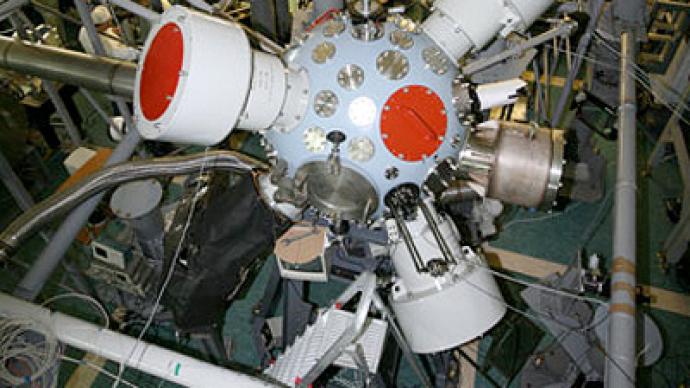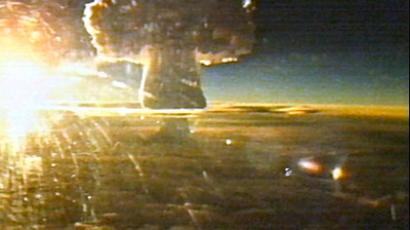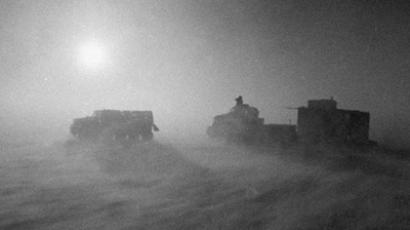Russian superlaser to be as good as H-bomb

Russia has launched a $1.5 billion project to create a high-energy superlaser site which designers pledge will be the best in the world. Capable of igniting nuclear fusion, the facility will be used both for thermonuclear weapon and civil purposes.
The new laser device will be used for inertial confinement fusion (ICF) studies. The field aims to recreate in the lab the processes which happen inside a star or in a hydrogen bomb explosion. ICF is similar to what scientists are trying to do with the International Thermonuclear Experimental Reactor (ITER) project, but takes an alternative approach to how nuclear fusion is started.The laser facility will be developed by the Research Institute of Experimental Physics (RFNC-VNIIEF), a leading Russian nuclear laboratory. In its six decades of history, it was involved in the development of both the military and civilian nuclear programs in Russia.The site will have the size of a 360-meter long 10-story building and be built near the Sarov technology park in Nizhny Novgorod region in central Russia, said the institute’s head of research, Radiy Ilkaev, who said it will be a dual-purpose device.“On the one hand, there is the defense component, because high energy density plasma physics can be productively studied on such devices. It’s necessary for developing thermonuclear weapons. On the other hand, there is the power industry component. The world’s leading physicists believe that laser nuclear fusion can be useful for future energetics,” the scientist said.The Russian device will be compatible with the American National Ignition Facility (NIF) and the French Laser Mégajoule (LMJ) in terms of their capabilities. The US laboratory is currently online. The French counterpart is due to be launched in 2012. The Russian facility may be ready in a decade, Ilkaev estimates.
Ilkaev says the future Russian facility will be able to deliver 2.8 megajoules of energy to its target, as compared to energy levels of about 2 megajoules for the American and French lasers.“We are making our device later than they did, because such projects are costly, but ours will be the best in the world,” the scientist promised.An ICF laser device takes a powerful laser beam, splits it into a dozen separate “beamlets”, amplifies each one individually and shoots all of them at a pellet of fusion fuel. If carefully timed, the pinhead-sized target implodes on itself, which makes the mix of deuterium and tritium in it 100 times denser than lead and heats it up to 100 million degrees. This is enough to start a chain nuclear fusion reaction.The process is somewhat similar to what happens in a thermonuclear bomb. In such a weapon an ordinary fission bomb is used to produce energy to trigger reaction in fusion fuel. An ICF attempts re-release the same nuclear energy in a more controlled manner.It may sound simple, but in practice it took scientists and engineers decades to create powerful lasers, special optic systems, techniques for precise target fabrication and other technologies to even come close to success. So far no laboratory has managed to produce more energy in this fashion than the amount used to power the laser.
But when this ignition milestone is reached, the result could be a source of clean power with fuel reserves lasting for centuries to come. Unlike uranium, which is used in present-day nuclear power plants, deuterium, which is a variation of hydrogen, is abundant in the oceans.And for the generals an ICF facility gives an opportunity to find out more about how thermonuclear weapons work. Currently the US, France and Russia are signatories to the Comprehensive Nuclear-Test-Ban Treaty, which forbids any kind of tests involving nuclear explosions.It means the military cannot just take an old bomb and detonate it to see if it's still operational after decades of storage. A superlaser capable of performing a mini-H-bomb blast can provide the data to alleviate those professional fears.













